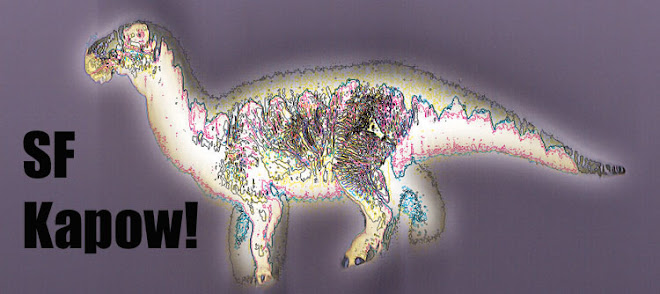I never read the script for the original pilot that was floating around out there. I guess it's part of my own spoiler-averse nature to avoid reading a script like that. Besides, what-might-have-been is profitless when it comes to TV. We have what the creator ultimately gave us, network bungling or not. So when I sat down to watch Echo last night, it was with the view that I was seeing an experiment, an early draft put down on film, an alternate world version of the characters.
Boy, I was not wrong about the alternate world part.
The basic plot sysnopsis is this: we get a whole big chunk of exposition right up front, with DeWitt narrating as we see Echo go through several missions: a pro bono drying out a young woman, a jealousy-inducing date at a wedding, and as a negotiator in a million dollar drug deal. Once that's out of the way – and we're talking a good long part of the episode here – we get into the main plot, which is once again Ballard's search for the Dollhouse and its attempts to throw him off.
They're not exactly subtle on this first draft of the plan. They have Victor/Lubov send him astray, and when the Caroline photo draws him right back in, they try to use Echo for the same project. When that fails, she tries to kill him, twice. Meanwhile, Topher is worried about the actives already, especially Echo. Apparently she's already developing somehow, and he has several talks about the issue with Boyd, and an awkward confrontation with Dr. Saunders.
DeWitt and Mr. Dominic, however, are notable mostly by their near total absence. DeWitt seems in control when dealing with the client and serving up spoonfuls of exposition near the opening of the show, but when we see her later she's being yelled at by her superiors over the phone (re: Ballard) or ordering his failed killing. She's less of a mighty and mysterious ice queen here.
In fact, while DeWitt is one of the major ensemble cast members by the latter part of the first season, in this pilot I'd have to say there are two protagonists: Ballard and Topher. Yeah, Topher. He gets a lot of screen time, and he's actively moving a chunk of plot forward. Echo/Caroline, on the other hand, feels sidelined.
A lot of things feel rushed, including the Doll/handler relationship, the imprinting process itself, and the question about where they get their "volunteers."
After watching Echo, my girlfriend, she who is both wise and beautiful, said that Ghost, the in-continuity pilot, was better structured. In many ways, I have to agree. There was more show and less tell, we saw the original Caroline before she was wiped, and we saw Alpha rather than simply hearing him mentioned. Of course, Ghost is saddled with a boring procedural kidnapping plot weighing it down.
I'm going to say that Echo is not a great pilot, not in the way that Serenity was for Firefly for example. It's flawed in more interesting ways than Ghost, however.
Ghost gives viewers a straightforward explanation of the show's central idea, and introduces the characters and their traits fairly well. Echo is all over the place. It's like an excited puppy, fun and cute and really packed with energy, but scattered. It feels like Joss Whedon had been sitting on his cool ideas for so long he couldn't not let them out all at once. Fly, my monkeys, fly! He takes the show almost to the place it was at the end of the first season in less than sixty minutes, but the ride is a little rough.
So I'm going to say something weird here: I understand why Fox ordered a second pilot. This pilot would have snagged me, but it is weird and frenetic and talky. Ghost is not a better pilot, but it's a much more conventional one. It has the kind of flaws that networks seem to think make for good TV. Echo has the kind of flaws that might signal greatness if the writer can rein him or herself in.
And having seen Whedon's other work, and the latter half of the season, I'd say greatness is still possible.
Oh, season two, where are you when I need you?
